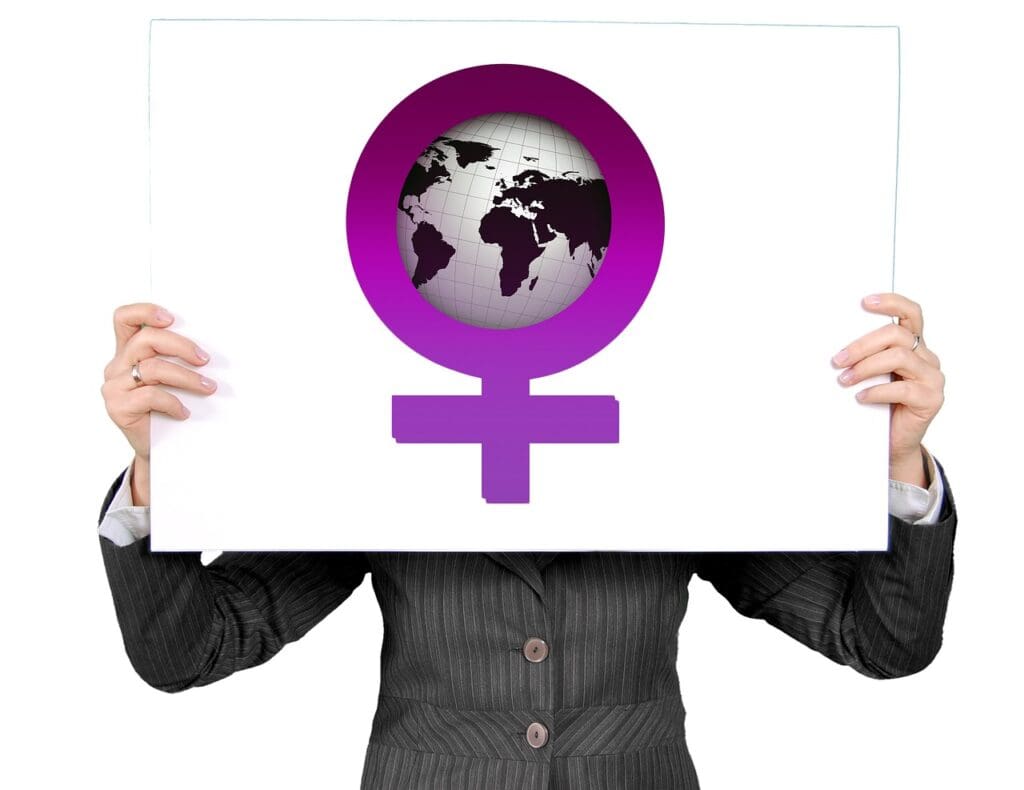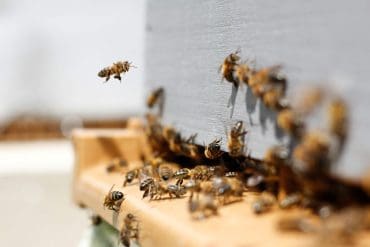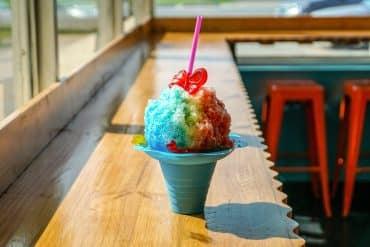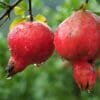Four Essays on Being Trans in the Anthropocene: Milk
Author’s Memo
As a self-described researcher and creative writer, much of my written engagements take autoethnographic form. Furthermore, as a queer and trans feminine person, writing is an activist strategy. It chronicles the lives and worlds of peoples whose ideas have been precluded from emergence in the global north, just as their ideas and bodies have experienced akin preclusion. My autoethnographic work relies heavily on reading my experience alongside the ideas of other queer scholars and writers. Because of queerness’ emergence and iterations having been precluded, it is important for me to return to the texts that inform my actualization in the world. In doing so, I situate my personal narrative as knowledge in discussion with other knowledge. I contribute to the genealogies that inform my retroactive readings of my lived experiences.
“Four Essays on Being Trans in the Anthropocene” is a project informed by the ideas of speculative anthropology which concerns the empirical alongside musings on past, present, and future possibilities. The central question centers around a felt dilemma of mine. What is my responsibility in the world as a trans feminine person living in a time where the human-induced strain on the planet is the driver of climate change and the climate crisis?
“Trans women are “chipped” at through an oppressive rebuttal system that insists trans women are not women.”
The dilemma is broached by an instance where I was reading Donna Haraway’s Staying with the Trouble, a speculative anthropology book about the Anthropocene, and how Haraway’s singular usage of the word “chip” drew my attention to a formative text for me— Sara Ahmed’s “An Affinity of Hammers” in Transgender Studies Quarterly that discusses how trans women are “chipped” at through an oppressive rebuttal system that insists trans women are not women. This work then begins to unfold using Haraway’s referral to Marilyn Strathern’s quote, “[i]t matters what ideas we use to think other ideas (with),” to suggest that it matters what texts pass through other texts. This idea of texts passing through each other is then demonstrated within each essay as I weave different scholarship together with instances in my personal narrative— the authoethnographic evidence.
Additionally, the four essays– MILK, ANTHOLOGIES, HORSES, & JOUISSANCE– therein contained work as a meta-performance of the idea of texts passing through other texts, as their ideas also pass through each other. The piece comes together in the end, approaching resolution without offering a definitive solution to the felt dilemma, still holding onto the texts of Haraway and Ahmed that ignited the investigation in the first place.
“This piece engages pertinent scholarship to my personal experiences and asks larger questions of our collective responsibility to earth and rectifying the strain we have inflicted on the planet as humans.”
“Four Essays on Being Trans in the Anthropocene” will be serialized in The AutoEthnographer and is divvied up into 4 parts.
- Part I includes the Preface and the essay, MILK.
- Part II is titled ANTHOLOGIES.
- Part III is titled HORSES.
- Part IV is titled JOUISSANCE and is accompanied by the concluding Benediction.
Such serialization further emphasizes the theme of texts passing through each other as each part, belonging to the whole of the larger essay, is distinguished in its cataloging.
This piece engages pertinent scholarship to my personal experiences and asks larger questions of our collective responsibility to earth and rectifying the strain we have inflicted on the planet as humans. Finally, though I engage scholarship, I do not do so in such a way to abrogate the evocative tone of the piece. I actually believe that its usage prods further evocatation– leaning into the Strathern quote, “[i]t matters what ideas we use to think other ideas (with)”
For Tray

Four Essays on Being Trans in the Anthropocene
“‘It matters what ideas we use to think other ideas (with)’”
Marilyn Strathern via Donna Haraway, Staying with the Trouble
“Chip, chip, chip: an affinity of hammers is what we are working toward.”
Sara Ahmed, “An Affinity of Hammers” in Transgender Studies Quarterly
Preface
“It matters what ideas we use to think other ideas” and “an affinity of hammers is what we are working toward” and it is difficult to read both texts through one another, one of each respective to the two quotes listed above. Donna Haraway wrote the former quote in Staying with the Trouble[1], and Sara Ahmed in “An Affinity of Hammers”[2] regarding that of the latter. It matters what texts we decide to read together, and it matters what texts pass through other texts.
I have no other initial reason for reading Ahmed and Haraway through each other than a shared word they have: “chipping.” Ahmed uses the word to commit to her imagery of the hammer and its hammering. I only noticed “chipping” once in Haraway’s book. That was enough to stop, enough to consider another text and how it might pass through the one in front of me, even as I forgot how she uses such a word.
“Ahmed’s “An Affinity of Hammers” is a masterclass in cisgender allyship with trans women against the narratives of trans-exclusionary radical feminism.”
Ahmed’s “An Affinity of Hammers” is a masterclass in cisgender allyship with trans women against the narratives of trans-exclusionary radical feminism (TERF) that seeks to “chip” away at trans women’s existence through that which she calls a rebuttal system. Trans women combat discourses that attack their womanhood, the actuality of their existence. Haraway’s book is about making it through the anthropocene. This current epoch of earth is marked by drastic human impact. It is a time in which humans have chipped at the earth and created a procession towards climate crisis. Haraway addresses how we might survive by living well, and dying well too, becoming compost in the end. This is a dilemma I shy away from. It can feel conflicting to advocate for one’s body on a struggling planet, feeling so small in scale. As Haraway says so plainly, “we are all compost.”
The Dilemma of Having a Body
Loosely, my thesis research was around queer spaces. It matters what ideas we use to think other ideas. I used Jack Halberstam and José Esteban Muñoz’s to think some of mine. Halberstam & Muñoz each have a book with themes of queer space and spaces. They begin their works with critiques of postmodern geographers who chose to exclude sexuality from their works on space with the pretense of its superficiality, Muñoz also using some of Halberstam’s ideas to think. These scholars fight for inclusion and name queer possibilities to introduce their works so as to explicate The Cruising Utopia[3], In a Queer Time & Place[4]. Halberstam wrote his book in 2005, using ideas to think with that we do not use now—transgenderism under the umbrella of sexuality, not necessarily having access to the thinking-ideas of the 2020’s.
“How conflicting it can feel, to advocate for one’s body, and how it feels to do so on a planet in crisis, feeling so small in scale, fighting for a gendered body when so many bodies might become catastrophic compost soon.”
This is the dilemma I shy away from, not self-doubt incurred from postmodern geographers declaring sexuality as frivolous in comparison to other demographics, but rather how conflicting it can feel, to advocate for one’s body, and how it feels to do so on a planet in crisis, feeling so small in scale, fighting for a gendered body when so many bodies might become catastrophic compost soon.
“It matters what ideas we use to think other ideas” and “an affinity of hammers is what we are working toward” and trans women are being chipped at and rebutted in this world, the one Haraway calls “Terra,” the one also being chipped at in the anthropocene. Trans and celestial bodies are in crisis alike, with a seemingly forced trade-off. That is my dilemma. But is it not with our bodies that we live and die and become compost. And is it too much to ask that trans and celestial bodies both do so well?
“Chipping” was enough to stop, and enough to consider. It matters what texts pass through other texts, and it matters what passes through you.

MILK
We sat on the wrap-around porch at my sister’s parent-in-laws’ house in Cape Cod. I sat across from my brother-in-law who was seated next to his brother and his brother’s girlfriend, who sat across from her parents, sitting in chairs to the left of me. It was a late morning with breakfast on the deck. A hearty spread of food was laid out to feed the meat-eating, vegan, vegetarian, and otherwise dietary-restricted factions of our crew.
My brother-in-law’s brother and his girlfriend were now vegans and, from what I could gather, were such for environmental and political reasons. I tried to inquire about their enviro-political understandings without being interrogatory— a bagel half with cream cheese and a spinach and goat cheese omelet in front of me. They discussed documentaries, the power of meat lobbyists in defining our consumption through their influence over discourses such as meat and dairy’s hierarchical placement in the food pyramid, and how meat’s protein level is attributable to the protein they get from grain, and that the grain production needed to feed livestock has its own detrimental impact, same with the production of livestock itself.
“It matters who gets to be a man, who gets to be an other-than-man and who gets to decide, or as Ahmed might say in “An Affinity of Hammers” who gets to rebut on the matter– the way trans women are chipped away in this regard.”
The argument against meat protein was this— the protein from grain passes through the livestock as they eat it, and onto us as we swallow our steaks and ground beef, but if humans were to consume the protein-giving grain directly, we would reduce meat production, therefore reducing the climate and atmospheric strain. The father seated to my left summarized the argument as, “cutting out the middleman,” referring to the cattle. It matters who gets to be a man, who gets to be an other-than-man and who gets to decide, or as Ahmed might say in “An Affinity of Hammers” who gets to rebut on the matter– the way trans women are chipped away in this regard.
HRT-Whetted Nipples
I think about milk more now that my nipples leak. When I started hormone replacement therapy (HRT), I didn’t think of how my nipples would morph. I knew that my breasts would become fattier and I was a bit reluctant about that, but didn’t know of how my nipples would grow. I guess I presumed that such organs had their threshold for growth, that nipples settled in our chests when we reached full post-pubescent adulthood. And I didn’t account for the puberty component though, how I was starting a second one with HRT.
It was months from the start of HRT before someone pressed their lips around the extending perimeters of my areolas. I was petrified that the fluid forming in my breasts would become unearthed in that moment, be consumed by the lover whose bed I laid in, that the estrogen and testosterone-blocker I swallowed would pass through my chipped open, lactating stream, and be ingested by the man who chose to suck on them. It matters what passes from one to another.
Breastfeeding Trans Women
After the establishment of cattle as middlemen, the conversation flowed into one regarding our responsibility to mitigating food production and its subsequent stress to Terra, our celestial body. They discussed the recent subscription to veganism of my brother-in-law’s brother and his girlfriend, with her parents lauding our shared generation’s ability to shift the cultural consumption of our society, all through our behavior, what we eat, what passes through us. We so often require responsibility of the individual and not the collective, the civilian over the governing body, the cell and not the organism.
I think about milk more now that my nipples leak. Unlike me and what I pass through my nipples, there are trans women who can truly lactate, develop milk that sustains, nourishes their children. The queer publication, Them., published a story of three trans woman’s experience lactating. In one of these stories, Brettnany says “My body will never allow me to conceive and bear a child, and I’ve always wanted to at least be able to nurse one. That was the main motivation for this.”[5] I think about milk now and who produces it– cattle, women, cis and trans alike, but different still, and some men. I think about who produces milk and who we pass it onto.
To Whom Can Milk Be Given?
There is a photo of an Awa Amazon tribesperson breastfeeding a squirrel[6] and I feel ambivalent things about it– the interspecies intimacy with the person’s cupping hands lifting the breast with palm and directing the nipple, within the rounded crook between index finger and thumb, towards the mouth of the squirrel, the other hand a gentle platform for the squirrel to stand. The squirrel’s mouth appears to be on the tip, with a visible left paw cupping back, its palm resting on the areola.
One of my ambivalent-feeling things regarding the breastfed squirrel is an encounter with my hypocritical self. How to pass milk from one to another surely must not cross the defined species lines, the lines I was doubly guilty of crossing on the Cape with my cow’s milk cream cheese and that of the goat too. I seize up at the reciprocal interspecies intimacy and the passing of milk from human to squirrel, compelled to claim the unnaturalness of it all, remembering that assertions of what is natural vs. unnatural is an all too common hammer that transphobes take to trans people.
An affinity of hammers is what we are working toward. Not the ones that chip at Terra and trans women, but the hammers with which we chip back. Ahmed says “[w]hen I hear people refer in code to ‘biology 101,’ meaning the scientific basis of female and male sex difference, to claim that trans women are not ‘biologically women,’ I want to offer in rebuke, ‘Biology 101? Patriarchy wrote that textbook!’”[7](p. 30).
Resisting Milk-Giving
It matters what passes from one to another, and it matters what does not. I read a chapter by Naisargi Dave in a book titled How Nature Works: Rethinking Labor on a Troubled Planet.[8] Dave’s chapter is about animal refusal to work, what we can learn from such a politic, leaning into a Marxist understanding that despites Karl, wishing for a postwork future. She details her visions of factory farms in India as a procession of live, but stunned, birds “with ropy necks whose veins were cut by a woman with alarming regularity and with no regard to the blood splattering all over…” (pp. 211-212) and obstinate goats being thrown over the edge of tall trucks, with breaking limbs.
Dave then tells a different tale, maybe a better one, of retired brigadier general, S. S. Chauhan, and his cow shelter that
“was like a paradise: green grass, visiting school children dancing under a gazebo, devotional music playing over loudspeakers for the benefit of the cows, around 1,200, all with expanses of space to roam, dropping wholesome dung, waste from their healthy, meticulously balanced diet.” (p. 222)
There is a cow at this shelter, Kamadhenu, who always has milk to give. It matters what passes from one to another, and it matters what does not. It matters that Kamadhenu stopped giving milk, haunting Chauhan’s early morning dreams with verbal speech. She says to the retired brigadier “‘I have been mistreated. I was left out in the cold. A worker abused me’” (p. 223). Chauhan corroborates her telling and he who once said of Kamadhenu and her milk, “‘Why would you not drink your mother’s milk? That is why she is here! What else is she going to do?’” (pp. 222, 223) “gave up milk, and curd, and the sale of anything acquired from his cows” (p. 223).
It Matters What Passes Through You
We so often require responsibility of the individual and not the collective. We require it from the civilian over the governing body, the cell and not the organism. My consumption is not above critique and modification. And from one leaker to my lactating others, I should attune my politics of consuming to my fellow producers of milk. But concerning immediate, needed change in a climate-catastrophic procession in the anthropocene, I don’t know if my behavior carries the same impact of Chauhan with his 1,200 cows who gave up milk after one vision and the admission of one worker. It matters what passes from one to another, and it matters what does not, and who is responsible for both? Whether an individual, civilian, and cell can chip through the anthropocene through individual behavior alone, is suspect.
Dave concludes her chapter saying “I think: not all work deserves to be resisted. Just the useful, mattering, kind. The kind that insists the world is ordinary” (p. 224). The kind that sees to cis women alone producing milk. Or the kind that allows humans alone to drink across species lines. And dictates dairy cows must pass their milk to another. The kind that says Biology 101 is natural and devoid of patriarchal agendas. And the kind that situates cattle as middleman and a trans woman as not an other-than-man. The kind that does not believe it matters what passes from one to another.
Maybe in order to make it through the anthropocene, we must do what so many critical actors have done. We must question what we consider natural and “ordinary” to preserve Terra’s anything but ordinary nature. Whether you, with your bagel half, eat the vegan cream cheese or that of dairy. Still, it matters what passes through you.
Credits
Featured image of splashing milk on black background by artemtation from Pixabay
Photo of woman holding sign with globe and female symbol by Gerd Altmann from Pixabay
[1] Haraway, DJ (2016). Staying with the trouble: Making kin in the chthulucene. Durham & London: Duke
University Press.
[2] Ahmed, S (2016). An Affinity of Hammers. TSQ: Transgender Studies Quarterly. 3. 22-34.
[3] Muñoz JE (2009) Cruising Utopia: The Then and There of Queer Futurity. New York: New
York University Press.
[4] Halberstam J (2005) In a Queer Time and Place: Transgender Bodies, Subcultural Lives. New York and
London: New York University Press.
[5] Burns, K. (2018). Yes, trans women can breastfeed — Here’s how. Them.. Retrieved October 25, 2022,
from https://www.them.us/story/trans-women-breastfeed
[6] Akbar, J. & Drury, F. (2016). Extraordinary photos of the awa amazon tribe. DailyMail. Retrieved October
25, 2022, from https://www.dailymail.co.uk/news/article-3342357/Pushed-brink-extinction-extraordinary-photos-Awa-Amazon-tribe-one-nature-breastfeed-SQUIRRELS.html
[7] Ahmed S (2016) An affinity of hammers. TSQ: Transgender studies quarterly 3 (1-2): 22-34
[8] Dave N (2019). Kamadhenu’s last stand: On animal refusal to work. In A Blanchette & S Besky (Eds.).
How nature works: Rethinking labor on a troubled planet (pp. 211-224). Albuquerque: University of New Mexico Press.
Learn More
New to autoethnography? Firstly, please visit What Is Autoethnography? How Can I Learn More? to learn about autoethnographic writing and expressive arts. Interested in contributing? Secondly, view our editorial board’s What Do Editors Look for When Reviewing Evocative Autoethnographic Work?. Accordingly, check out our Submissions page. View Our Team in order to learn about our editorial board. Please see our Work with Us page to learn about volunteering at The AutoEthnographer. Lastly, do visit Scholarships to learn about our annual student scholarship competition.
Aislin Neufeldt (they/she) is a writer originally from Kansas. Their work engages queer theory with the personal narrative, allowing them to add further life to one another. You can find her work featured in "Here's My Story" online at The Gay & Lesbian Review Worldwide, Hobart, and Essay Daily.













